The criteria for selecting the 50 villages were the following: all the towns/villages in the list had to have less than 20,000 inhabitants and then the options were ordered by data compiled from search results and trends in Google. If you are at a loss for things to do or want a different destination from time to time, these 50 towns are the ideal way to discover rural Spain:
Andalucía
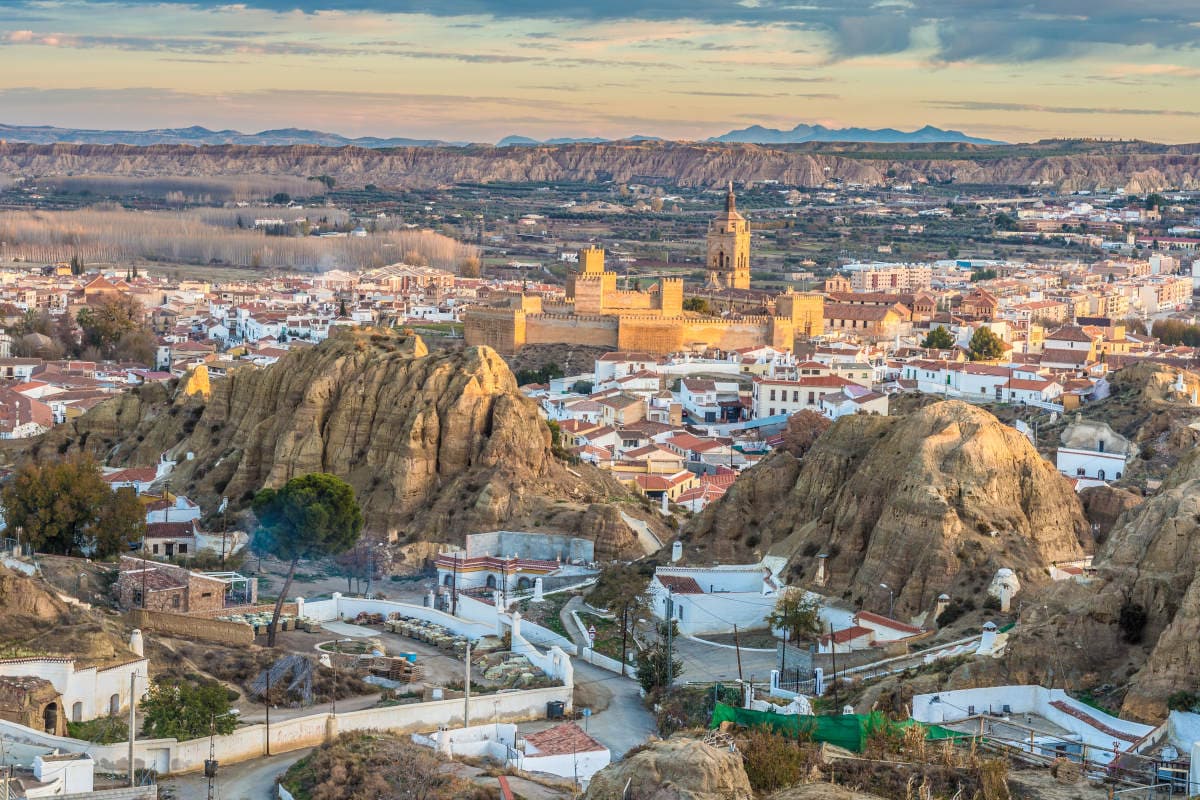
Osuna (Seville): the ducal town has a very rich artistic heritage. The Monastery of the Incarnation, the Collegiate Church and the Quarries are just a small sample of its many charms.
Frigiliana (Málaga): located in the Natural Park of the Sierras de Almijara, Tejeda and Alhama, walking through the narrow and steep streets of its historic centre is like travelling back in time. Go to the viewpoint of Callejón del Peñón to enjoy a panoramic view of the entire town.
Setenil de las Bodegas (Cádiz): this town in the Sierra de Cádiz is part of the Route of the White Villages. One of its peculiarities is the location of its houses, many of which were built "sheltered" from the rocks.
Guadix (Granada): the 'European Capital of Caves' has more than 2000 inhabited cave houses.
Rute (Córdoba): one of the main attractions of Rute is the many gastronomic museums, in many, they continue to make anise, nougat or chocolate, among other products following traditional methods.
Mojácar (Almería): a few kilometres from the coast of Almería, we can find this white town full of places of interest, such as the Plaza del Parterre, the Church of Santa María or the Puerta de la Ciudad.
Cazorla (Jaén): Hidden between olive groves and with the mountains behind, Cazorla is the perfect option for those who want to enjoy nature and cultural visits at the same time.
Aracena (Huelva): one of the most popular places in this town, located in the Sierra de Aracena and Picos de Aroche Natural Park, is the Gruta de las Maravillas, a true paradise of stalactites and stalagmites.
Aragón
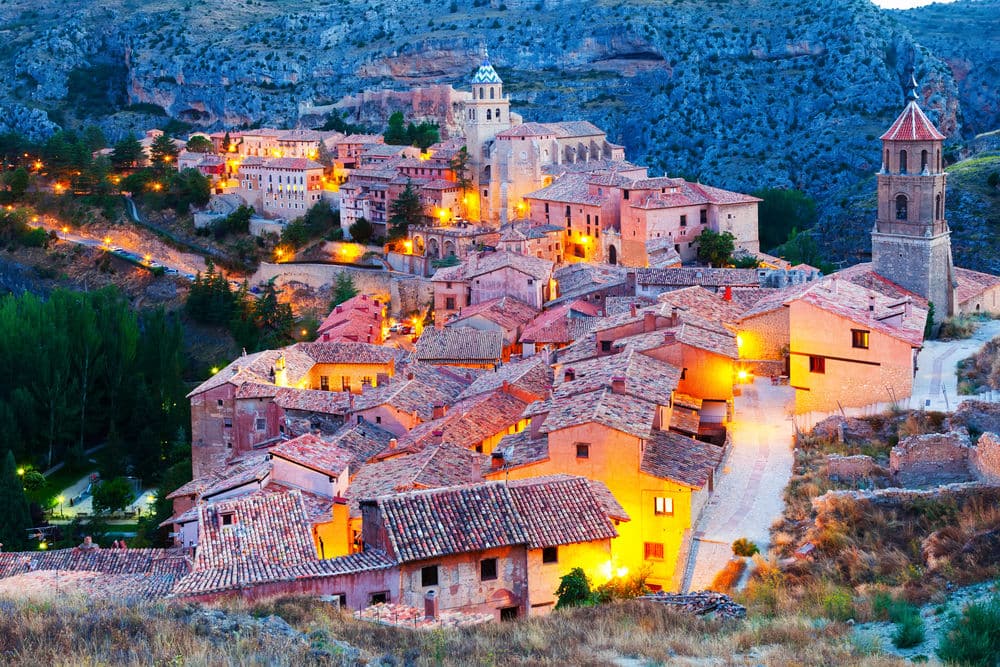
Tarazona (Zaragoza): amongst the great cultural offering of Tarazona, considered one of the most monumental cities in Aragon, the cathedral stands out, built in the French Gothic style, but with Mudejar and Renaissance elements.
Jaca (Huesca): at 820 meters above sea level, in addition to being a reference destination for winter sports lovers, Jaca has an important monumental legacy. Good proof of this is its citadel, a 16th-century fortress.
Albarracín (Teruel): this small medieval town of just over 1000 inhabitants is, without a doubt, one of the most picturesque in Spain. Located on a hill in the Universal Mountains and surrounded almost entirely by the Guadalaviar River, it has many places of interest, such as the Church of Santa María or the Episcopal Palace.
Asturias
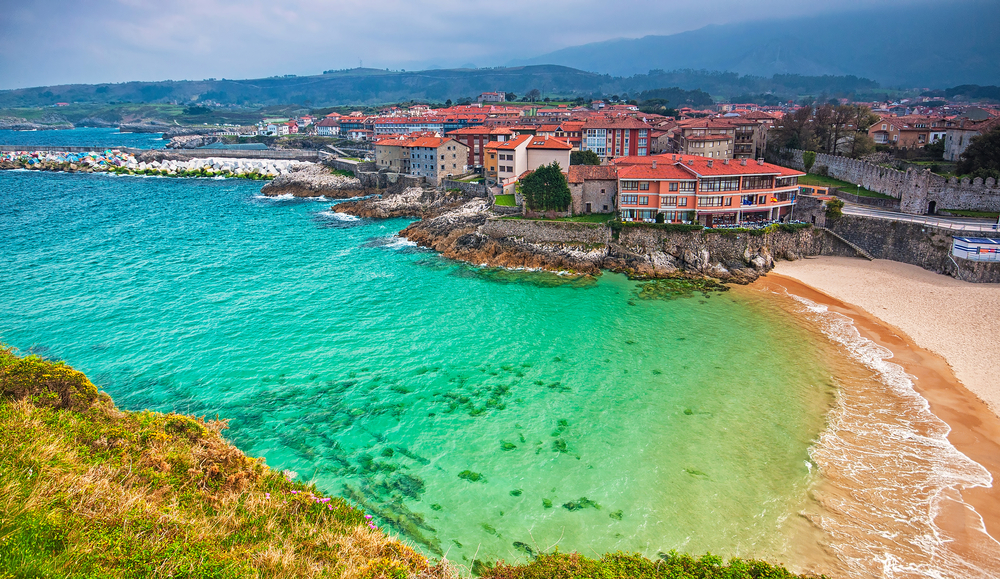
Llanes: the historic centre of this fishing village, declared a Historic-Artistic Site, is one of the best-preserved in the Principality of Asturias. Two of its strong points are the palaces and emblazoned houses.
Canarias
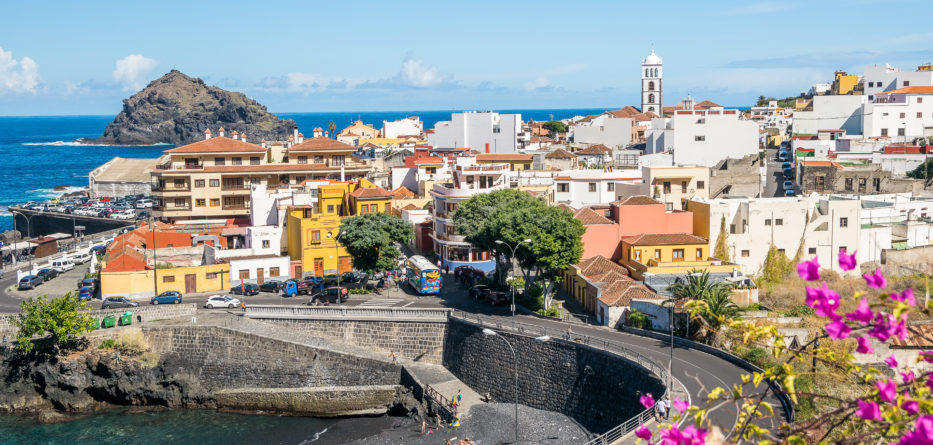
Teror (Las Palmas): in this beautiful town on the island of Gran Canaria is the Basilica to the Virgen del Pino, patron saint of the Diocese of the Canary Islands. Also go to the historic centre to see the characteristic balconies of Canarian architecture, especially in Plaza del Pino and Calle Real.
Garachico (Santa Cruz de Tenerife): although the eruption of the Trevejo volcano in 1706 was a hard blow for Garachico, this Tenerife town knew how to rise from its ashes, and today its rich architectural heritage takes us back to the 16th and 17th centuries.
Cantabria

Comillas: also known as the 'Villa de Los Arzobispos', Comillas has some of the most important modernist monuments in Cantabria. The jewel in the crown is undoubtedly El Capricho, the work of the great Antonio Gaudí.
Castilla y León
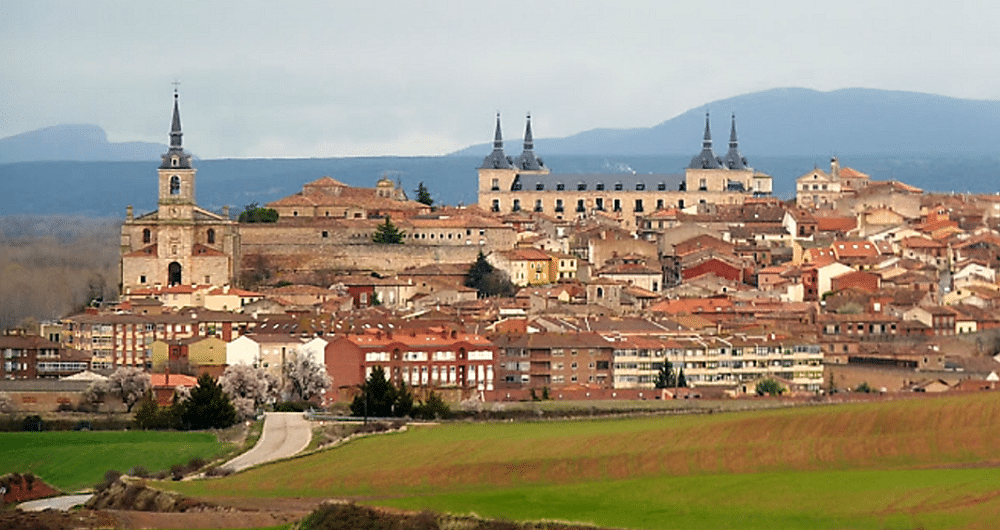
Tordesillas (Valladolid): this town witnessed numerous historical events, such as the signing of the Treaty of Tordesillas in 1494. Its historical and architectural legacy make it one of the most popular places in Castilla y León. Among its most outstanding monuments, it is worth mentioning the Houses of the Treaty, the Royal Monastery of Santa Clara, the Church of Santa María and the Plaza Mayor.
Astorga (León): the city where two of the main routes of the Camino de Santiago converge, the French Way and the Vía de la Plata, has an important legacy from Roman times. The cathedral and the Episcopal Palace are also two points of great cultural interest.
Lerma (Burgos): the town of Lerma, located on a hillock in the Arlanza region, has one of the most outstanding Herrerian-style architectural ensembles in Spain. The history of the town is intrinsically linked to the Duke of Lerma, one of the most visited places being the Ducal Palace.
Ciudad Rodrigo (Salamanca): Ciudad Rodrigo is synonymous with historical, cultural and natural heritage. In this walled city, whose historic centre was declared a Historic-Artistic Site, it is possible to visit innumerable architectural gems, such as the Castle of Enrique II de Trastamara or the Cathedral of Santa María.
Puebla de Sanabria (Zamora): located in the vicinity of the Lago de Sanabria natural park, its cobbled streets lead the visitor to discover places as magical as the Castle of the Counts of Benavente or the church of Santa María del Azogue.
Cervera de Pisuerga (Palencia): this small village in the Palentina mountain has a lot to offer. A good starting point to start discovering Cervera is the Plaza Mayor, whose arcades and stone columns are a clear example of Castilian architecture.
Arenas de San Pedro (Ávila): in the middle of the Sierra de Gredos and at a height of 510 meters, in Arenas de San Pedro there is no shortage of places to visit. One of the most visited is the Castillo del Condestable Dávalos, declared a Historic-Artistic Monument in 1931. Today, the Torre del Homenaje houses an interesting museum.
Pedraza (Segovia): declared a Historic Site in 1951, this medieval walled town is a magnet for tourists, due to its beauty and rich heritage.
Medinaceli (Soria): its most emblematic monument, the Arco de Medinaceli, dates from the 1st century and is a good example of the rich heritage of this town, in which the traces of the many civilizations that inhabited it can still be seen.
Castilla-La Mancha
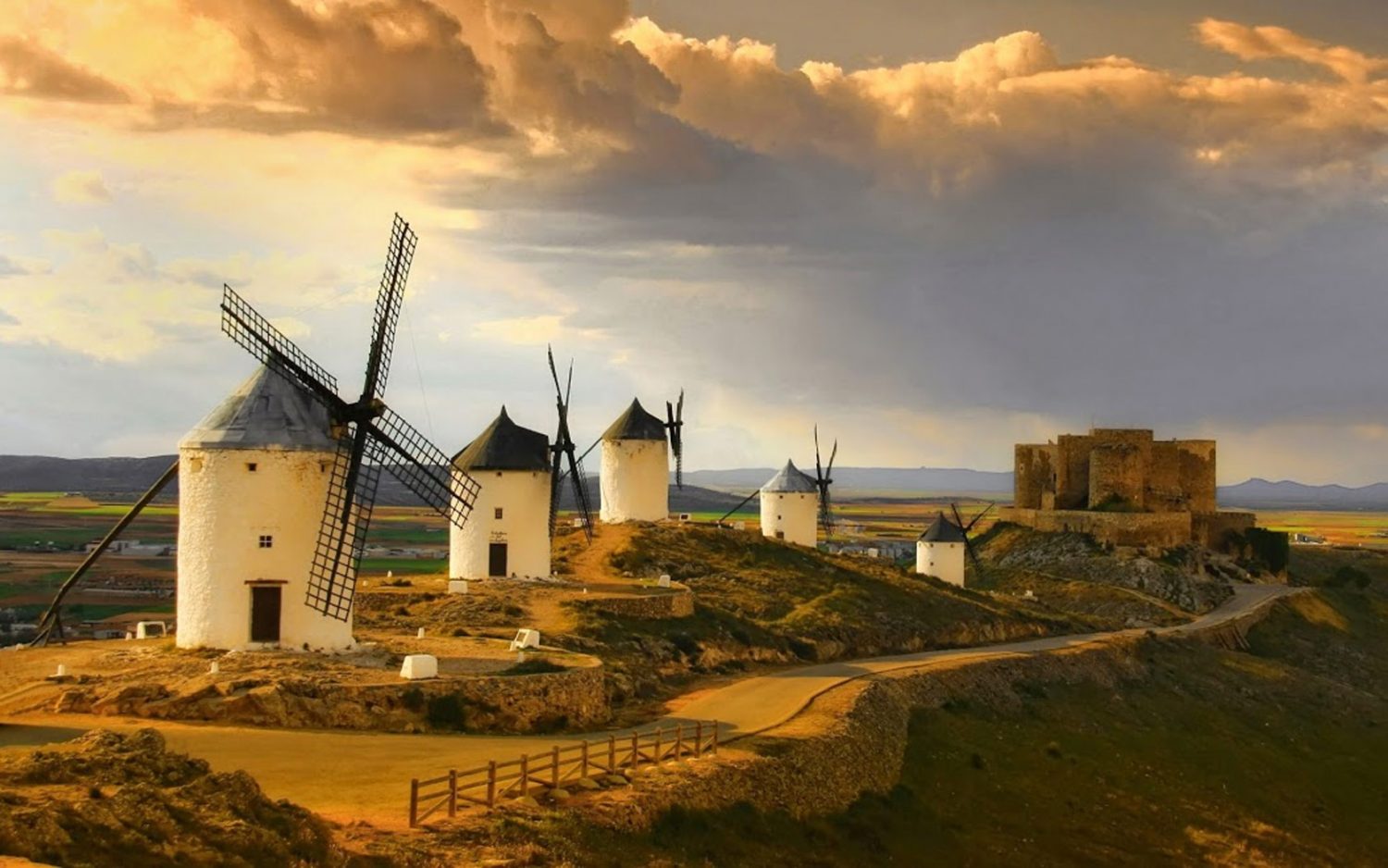
Consuegra (Toledo): we cannot talk about Consuegra without mentioning its 12 windmills, which, together with the Castillo de la Muela, form the ideal setting to relive the best exploits of the ingenious gentleman Don Quixote de La Mancha.
Almagro (Ciudad Real): here is the only Corral de Comedias that has been preserved as it was in the seventeenth century, and best of all, it is still active! For that alone, Almagro is worth visiting!
Alcalá del Júcar (Albacete): the hermitage of San Lorenzo, the castle and the picturesque cave-houses are just some of the monuments that await you in Alcalá del Júcar, a town declared a Historic-Artistic Site in 1982.
Sigüenza (Guadalajara): thanks to its wide cultural, natural and gastronomic offering, Sigüenza is one of the most popular destinations in Castilla-La Mancha. The town, which due to its strategic location was already populated during the Paleolithic and Neolithic periods, has many places of interest, such as the castle, the Casa del Doncel or the church of San Vicente.
Belmonte (Cuenca): the castle of Belmonte, in the Gothic-Mudejar style, dominates the horizon of this beautiful town. Since its construction in 1456, the fortress had an important role in the different stages of history. In the 19th century, the castle was inherited by Eugenia de Montijo, future Empress of France.
Cataluña
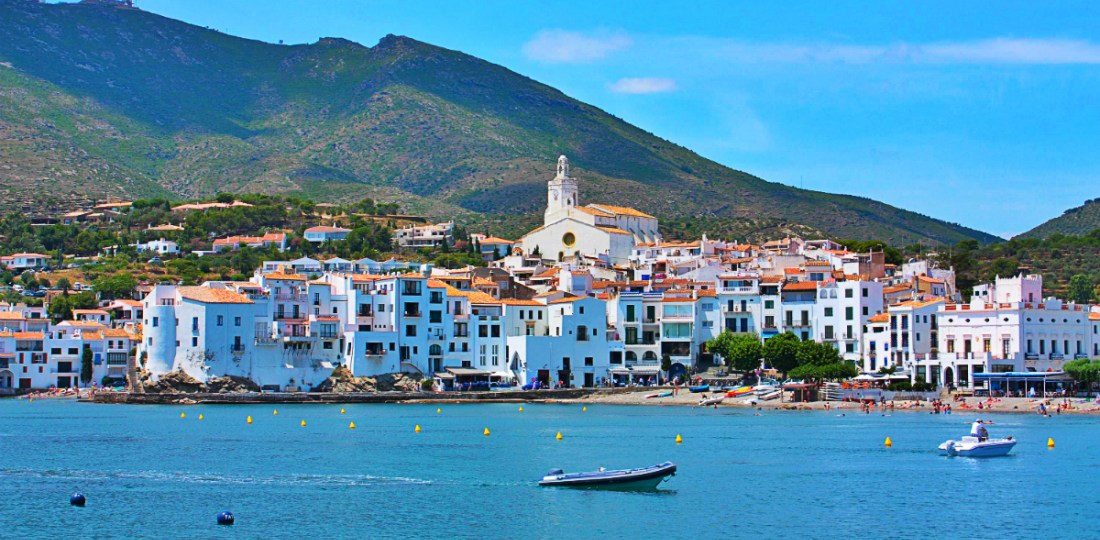
Cardona (Barcelona): in addition to the picturesque historic centre, travellers who come to Cardona can visit the impregnable castle built in 886 by Wilfredo el Velloso. The fortress was the residence of the lords of Cardona, nicknamed the Crownless Kings, during the Middle Ages.
Miravet (Tarragona): on the banks of the Ebro river we find one of the most charming villas in Catalonia, Miravet. The 12th century Templar castle is one of its main attractions, and many curious people come here to see the walls and the different rooms of the fortress.
Cadaqués (Gerona): the picturesque white houses scattered through the labyrinthine streets of the old town make Cadaqués one of the most charming coastal towns in all of Spain. In addition to sun and beach, the town has emblematic buildings such as the House of Don Octavio Serinyana, the Torre del Colom or the parish church of Santa María.
Solsona (Lérida): Baroque lovers cannot miss Solsona, as the city has an important architectural legacy in this style. Among its most outstanding monuments are the Episcopal Palace and the Portal del Puente.
Comunidad de Madrid
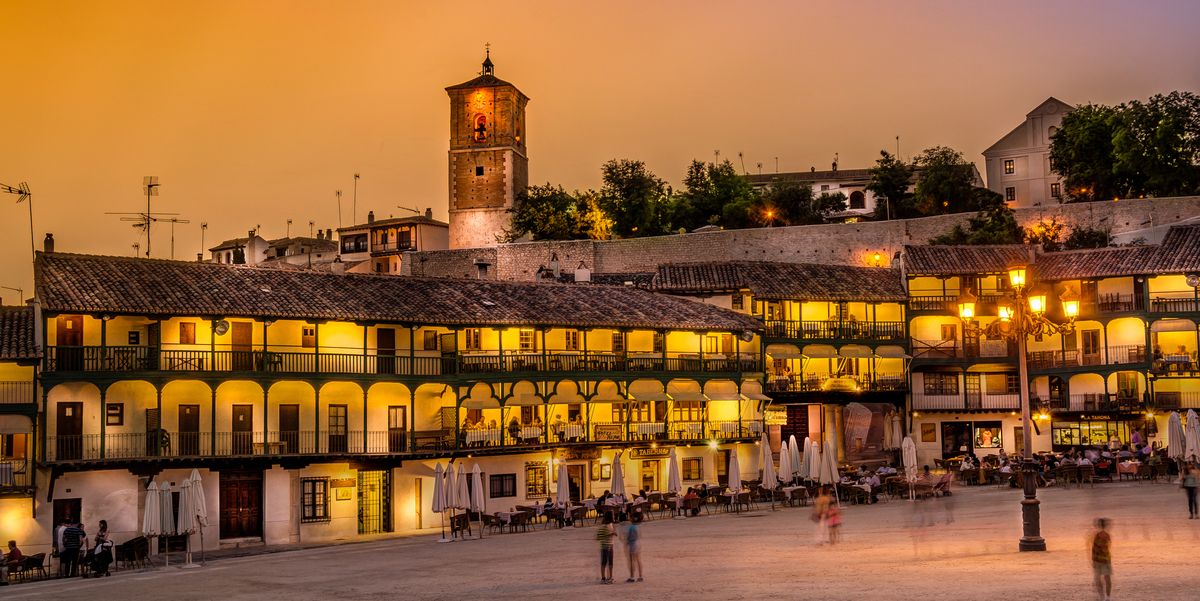
Chinchón: Its Plaza Mayor, full of wooden balconies and arcades dating from the 15th century, is the heart of Chinchón. In addition to the charm of the popular Castilian architecture of the square, this Madrid town has other places of interest, such as the Clock Tower or the Church of Nuestra Señora de la Asunción.
Valencian Community
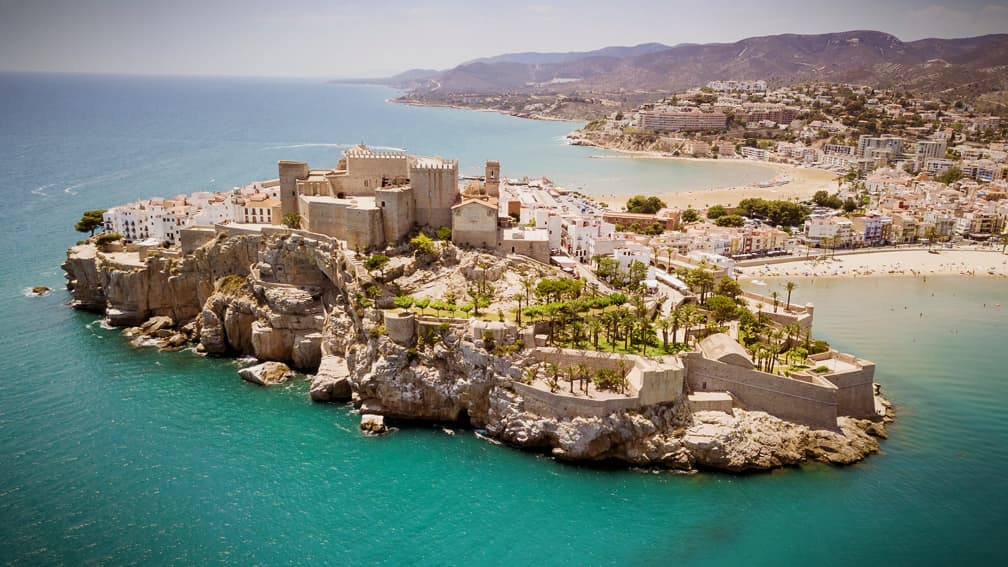
Bocairent (Valencia): in this Valencian town, stone is art. Come to Les Covetes dels Moros and discover it for yourself. It is believed that this set of artificial caves with more than 50 "windows", located in the Barranc de la Fos cliff, served centuries ago as granaries or warehouses.
Guadalest (Alicante): Guadalest is a small town with a long history, evidence of its existence goes back to Muslim times. Declared a Site of Cultural Interest, the town has several monuments and places of interest, such as the San José Castle, the Alcozaiba castle and the Casa Orduña.
Peñíscola (Castellón): Peñíscola Castle, also known as Castillo del Papa Luna, is one of the main attractions of this town on the shores of the Mediterranean. Did you know that the old Templar castle became the residence of Pope Benedict XIII?
Extremadura
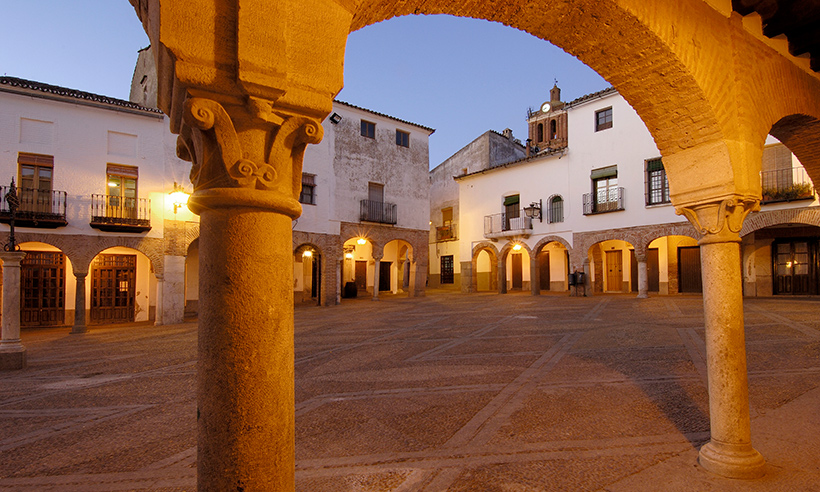
Zafra (Badajoz): go to the Plaza Chica, where weekly markets have been held since 1380, to see up close the "rod of Zafra" on one of the columns of the arcade. This rod was the system of measurement used by the merchants of the time. Other must-see places are the Alcázar de Los Duques de Feria, the Convent-Museum of Santa Clara and La Candelaria.
Trujillo (Cáceres): the city of Trujillo, structured around the Plaza Mayor, forms part of the Ruta de Los Conquistadores, a route that reviews the key places related to the Discovery of America since it is the hometown of Francisco de Pizarro. Among the many monuments, the castle stands out, whose construction dates back to the 9th century, during the golden years of the Caliphate of Córdoba.
Galicia
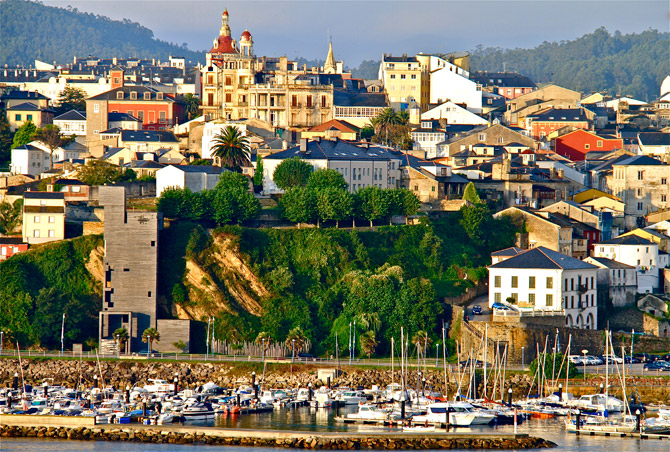
Betanzos (A Coruña): also known as the City of Knights, Betanzos became the capital of one of the provinces of the former Kingdom of Galicia. Today, its rich cultural heritage is a reflection of its long history. A good example of this is its old town, declared a historic-artistic complex in 1970.
Cambados (Pontevedra): the 'Capital of Albariño' has numerous places of interest, such as the Pazo de Fefiñáns, the Pazo de Ulloa or the Torre de San Saturniño. This beautiful fishing village is the perfect option for those who want to enjoy a good food-and-wine experience at the same time.
Ribadeo (Lugo): the emblazoned palaces of its historic centre and the "Indianos" mansions (of South American style) in the San Roque neighbourhood are a symbol of the architectural wealth of this beautiful town in Mariña Lucense. Also, the world-famous 'Cathedrals' beach is very close to the town.
Allariz (Ourense): thanks to the stupendous rehabilitation of its historic centre, this town located in the heart of the province was awarded the European Urban Planning Prize in 1994.
Islas Baleares
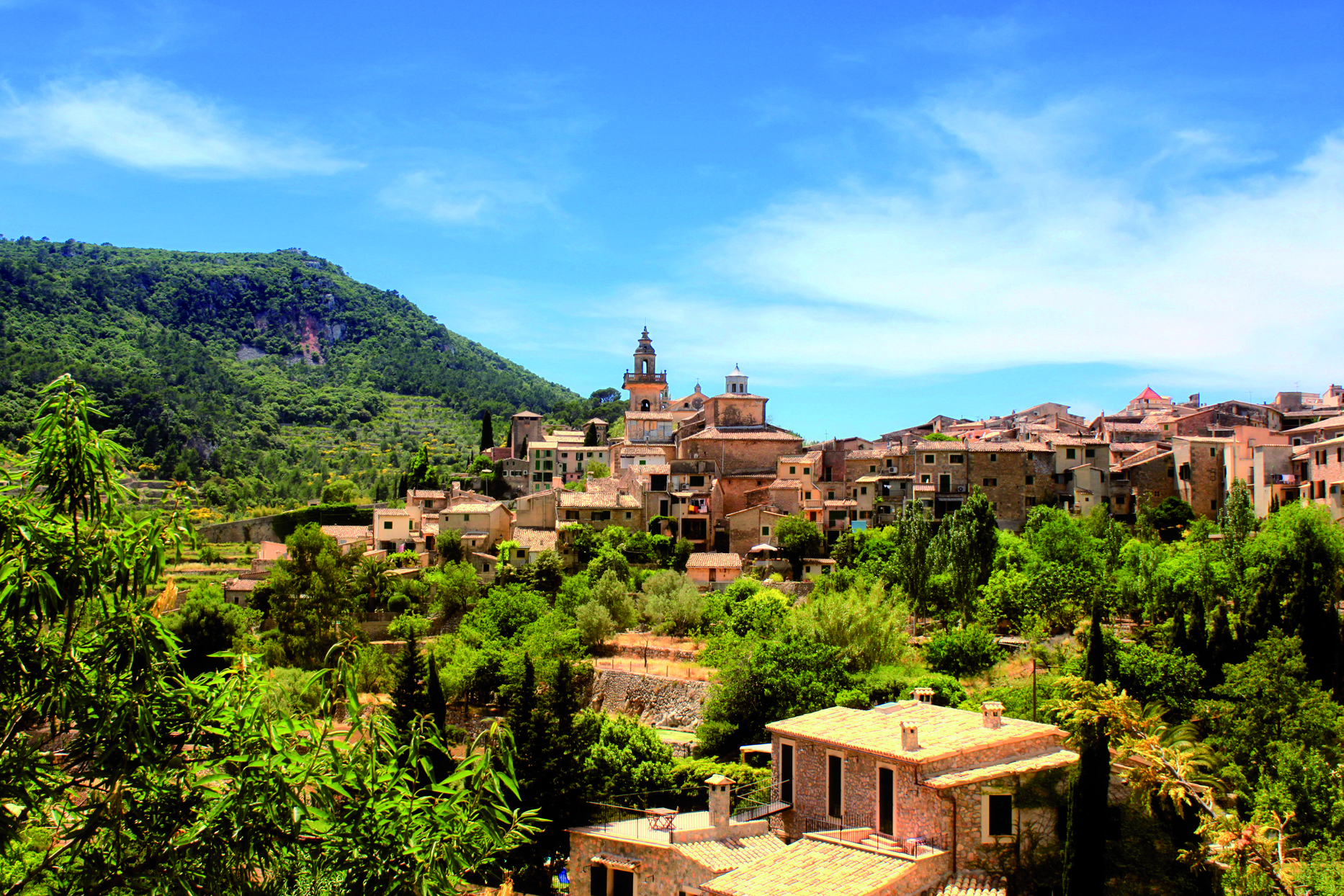
Valldemossa: on the island of Mallorca, between the Tramuntana mountain range and the Mediterranean Sea, we find Valldemossa, a beautiful town surrounded by vegetation just over 400 meters above sea level. If you could only visit one place, go to the Real Cartuja de Jesús de Nazareth, a former monastery of the Carthusian monks, through which Chopin, Unamuno or Jovellanos, among others, passed.
La Rioja

Haro: Haro, a favourite destination for lovers of wine tourism, also has an important architectural and cultural legacy. Its famous historic centre ("Herradura"), the church of Santo Tomás, the basilica of Santa María de la Vega or the stately palaces, whose construction dates back to the 16th and 18th centuries, are an essential visit.
Navarra
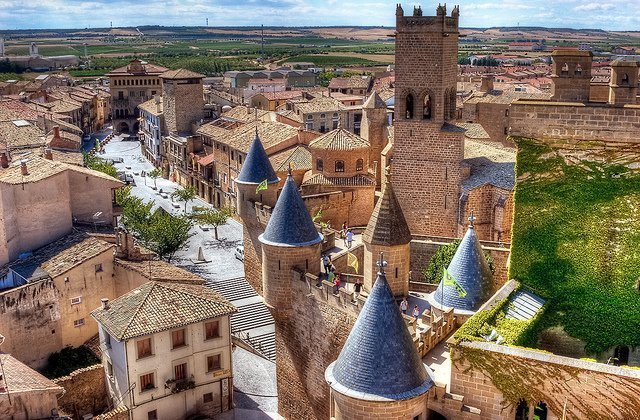
Olite: the city's castle is the most important medieval monument in Navarra and one of the most popular fortresses in all of Spain. Royal seat during the Middle Ages, in 1925 it was declared a national monument. In addition to the castle, in Olite there are numerous monuments and places of interest, such as the church of San Pedro, the church of Santa María la Real, the Roman walls or the Plaza de Carlos III.
País Vasco
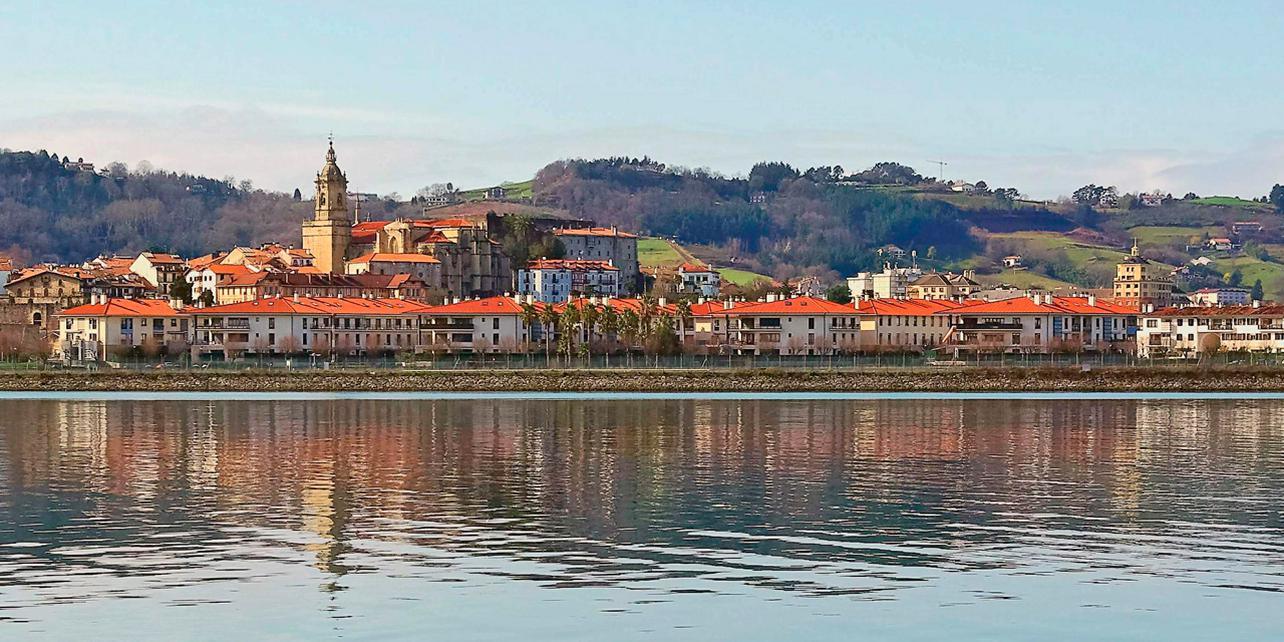
Bermeo (Vizcaya): this fishing village located in the Urdaibai Biosphere Reserve is an essential stop in the Basque Country. Although many come to this town to visit San Juan de Gaztelugatxe, the truth is that Bermeo has many other attractions, such as the Ercilla Tower, the Old Port, the Church of Santa Eufemia or the old town.
Hondarribia (Guipúzcoa): at the mouth of the Bidasoa River, Hondarribia welcomes its visitors with the colourful balconies of its typical houses. The current structure of the walled enclosure dates from the Renaissance, but efforts to fortify the city had already begun in the High Middle Ages. Behind its walls is an old town with cobbled streets where places of interest follow one after another.
Laguardia (Álava): in addition to the excellent preservation of the medieval layout, with jewels such as the Church of Santa María de Los Reyes or San Juan Bautista, the capital of Rioja Alavesa conquers hearts and palates thanks to its excellent food and wine offer.
Murcia
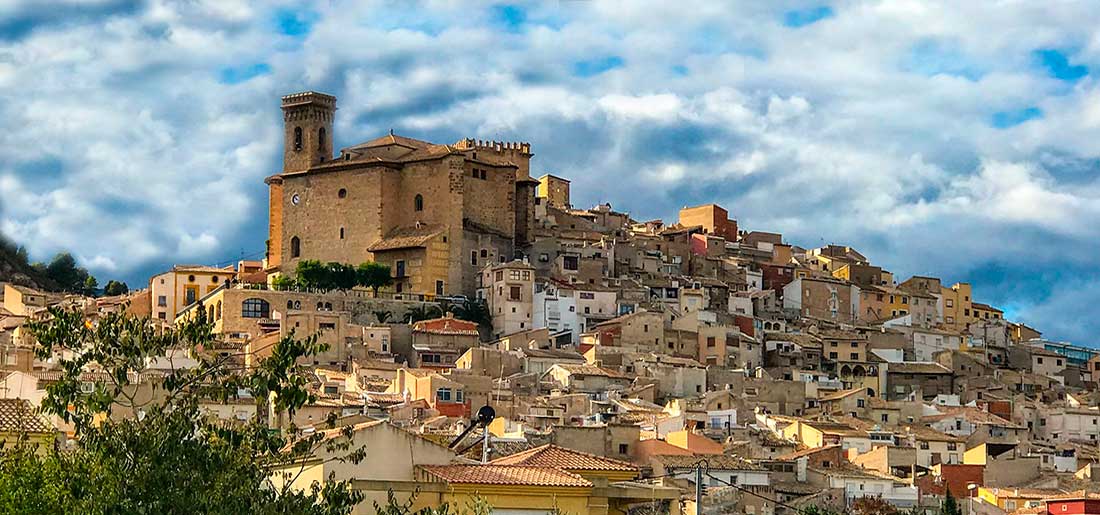
Moratalla: the castle-fortress and the Church of Our Lady of the Assumption of Moratalla dominate the horizon of this beautiful mountain town. Another of its great attractions is the ritual of the Tamboradas, declared Intangible Cultural Heritage of Humanity by Unesco, a show that is worth seeing at least once in your life.